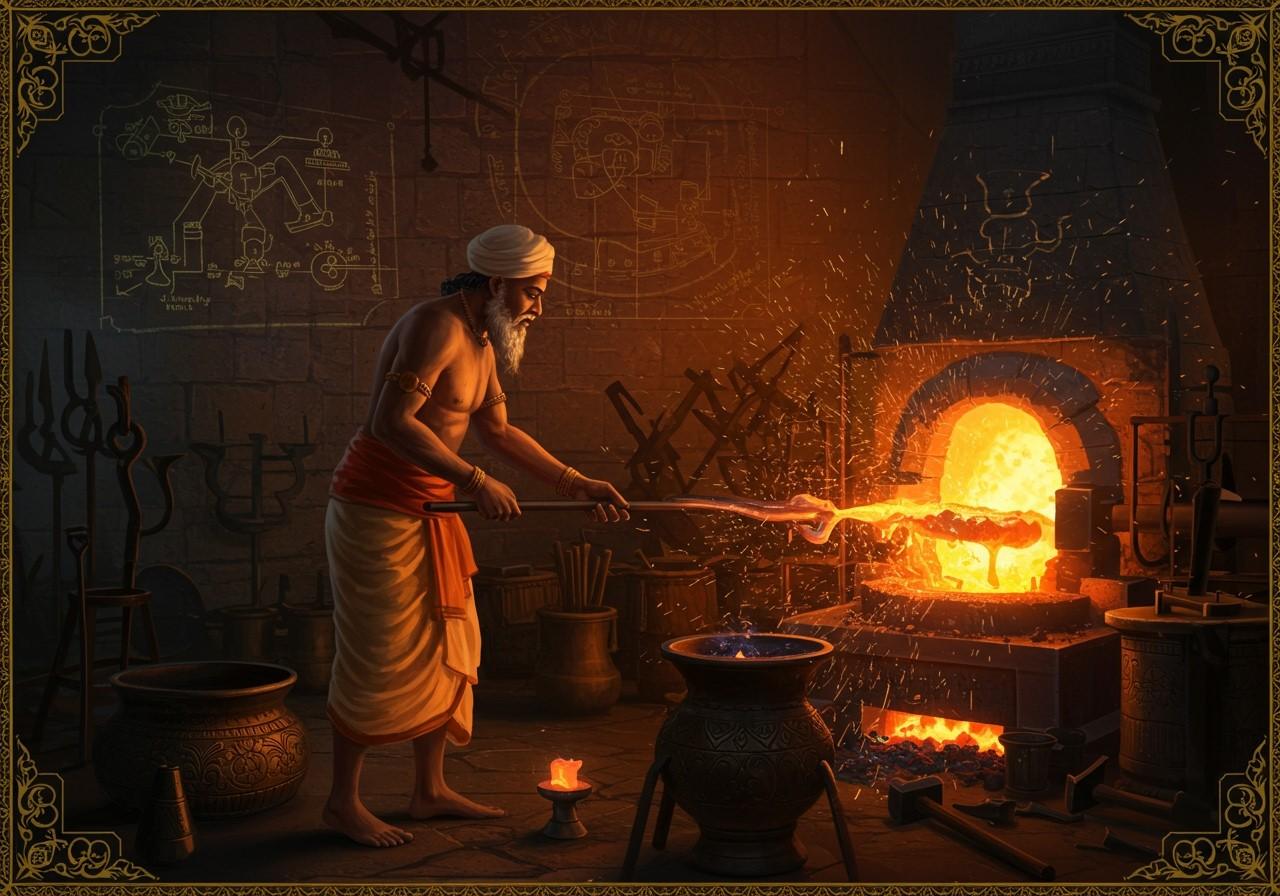
Wootz steel, a marvel of ancient metallurgy, holds a significant place in history. Originating in India around 300 BCE, this high-quality steel became renowned for its exceptional properties. Its legacy is intertwined with the legendary Damascus steel, famed for its distinctive wavy patterns and superior strength. Wootz steel ingots, produced in India, were transported to Damascus, Syria, where skilled artisans forged them into exceptional blades.
A Journey Through Time: The History of Wootz Steel
The story of Wootz steel begins in ancient India, where it was first produced around 300 BCE. From there, it journeyed along trade routes, reaching the Middle East and eventually Europe. This steel played a pivotal role in the creation of Damascus steel, known for its unique patterns and exceptional quality. Historical figures like Alexander the Great and Pliny the Elder even marveled at its superior properties.
The Art of Creation: Making Wootz Steel
Crafting Wootz steel was a meticulous process, a blend of art and science. It began with the selection of high-quality iron ore, charcoal, and specific plant materials. These ingredients were then carefully placed in small clay crucibles and heated in furnaces. Precise control over temperature and atmosphere was essential for achieving the desired microstructure. The process involved:
- Preparation: Carefully preparing the crucible and placing the raw materials inside.
- Carburization: Introducing carbon into the iron, a crucial step in achieving the steel’s hardness and strength.
- Melting: Melting the materials at high temperatures for several hours, allowing the ingredients to fuse and transform.
- Cooling: Slowly cooling the molten ingots, a critical stage for developing the unique crystalline structure responsible for the steel’s remarkable properties.
- Forging and Heat Treatment: The final steps, enhancing the steel’s hardness, flexibility, and overall performance through forging and heat treatment.
Unveiling the Unique Properties
What distinguishes Wootz steel is its high carbon content, contributing to its exceptional hardness and edge retention. The presence of carbide particles within the steel matrix creates the distinctive patterns that make it so recognizable. Its toughness and resistance to wear made it ideal for weapons and tools. Modern scientific analyses continue to unveil the unique properties of this ancient material.
Cultural and Technological Significance
Wootz steel held immense cultural significance in ancient India, particularly in the crafting of traditional weaponry like swords and daggers. The knowledge of its metallurgy spread through trade and conquest, influencing cultures far beyond India’s borders. Even today, attempts to recreate Wootz steel using modern techniques testify to its lasting legacy in the world of metallurgy.
Poojn.in: Connecting You to India’s Metallurgical Heritage
While Poojn.in doesn’t offer Wootz steel itself, we provide a wide selection of authentic ritual items and traditional materials that connect you to India’s rich metallurgical heritage. Explore our collection of:
- Pure Copper Vessels and Items: Discover a variety of pure copper vessels and items used in traditional ceremonies. These items are crafted with meticulous attention to detail, reflecting the rich heritage of copper work in India. Explore our Ananda Kosha Kushi and Copper Kosha Kushi collection.
- Iron-Based Ritual Items: Connect with tradition through our selection of iron-based ritual items. These items are crafted using time-honored techniques, reflecting the enduring significance of iron in Indian culture. Browse our Brass Tir Kathi and other related products.
Visit www.poojn.in to discover our complete collection. Our customer service team is available to answer your questions and assist you with your selections.
Conclusion: A Timeless Legacy
Wootz steel stands as a testament to ancient India’s technological prowess and rich cultural heritage. Its creation was a delicate balance of art and science, demanding skill, precision, and profound knowledge. The unique properties and intricate patterns of Wootz steel continue to captivate metallurgists and historians even today. It serves as a powerful reminder of India’s rich history and the enduring brilliance of its traditional metallurgy.
Frequently Asked Questions about Wootz Steel
How is Wootz steel made? Wootz steel is created through a crucible process, where iron is melted with carbon-rich materials. This mixture is heated until liquefied and then slowly cooled, allowing carbon to infuse the iron and create a unique pattern.
What is the significance of Wootz steel? Wootz steel is renowned for its exceptional strength, flexibility, and distinctive patterns. These qualities, along with its historical significance, make it highly valued.
Can Wootz steel be made today? While challenging to replicate the exact ancient methods, Wootz steel can be produced today using modern techniques. These modern approaches often employ similar principles but within more controlled environments.
What were the uses of Wootz steel? Primarily used for crafting high-quality blades and swords due to its strength and flexibility, Wootz steel is also cherished by collectors and historians for its historical value and unique appearance.


